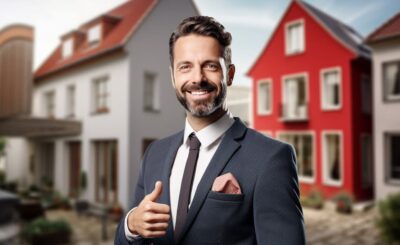In recent years, the real estate sector has witnessed a significant shift towards sustainability and green building practices. This transformation is driven by increasing awareness of environmental issues, advancements in building technologies, and the demand for healthier living and working environments. Sustainable real estate practices not only contribute to the well-being of the planet but also offer economic and social benefits to developers, investors, and occupants. This blog explores the key aspects of sustainable and green building practices in real estate, their benefits, and the future outlook for this crucial sector.
Understanding Sustainable and Green Building
Sustainable and green building practices aim to minimize the environmental impact of construction and operation while promoting resource efficiency and occupant well-being. These practices encompass a broad range of strategies and technologies, including energy efficiency, water conservation, sustainable materials, waste reduction, and indoor environmental quality.
Energy Efficiency
Energy efficiency is a cornerstone of sustainable building. It involves the use of design, materials, and technologies that reduce energy consumption and enhance building performance. Key strategies include:
Passive Solar Design: Utilizing building orientation, window placement, and thermal mass to optimize natural heating, cooling, and lighting.
High-Performance Insulation: Improving the building envelope with advanced insulation materials to reduce heating and cooling demands.
Energy-Efficient HVAC Systems: Installing high-efficiency heating, ventilation, and air conditioning systems that use less energy and provide better indoor climate control.
Renewable Energy Sources: Incorporating solar panels, wind turbines, and other renewable energy systems to generate clean, onsite power.
Water Conservation
Water conservation is another critical aspect of sustainable building. It involves reducing water usage through efficient fixtures, landscaping, and water management systems. Strategies include:
Low-Flow Fixtures: Installing low-flow toilets, faucets, and showerheads to reduce water consumption.
Rainwater Harvesting: Collecting and storing rainwater for non-potable uses such as irrigation and toilet flushing.
Drought-Resistant Landscaping: Using native plants and xeriscaping techniques to minimize the need for irrigation.
Greywater Recycling: Reusing water from sinks, showers, and laundry for landscape irrigation and other non-potable applications.
Sustainable Materials
Choosing sustainable materials is essential for reducing the environmental impact of building construction and operation. Sustainable materials are typically renewable, recycled, or have a low environmental footprint. Key considerations include:
Recycled and Reclaimed Materials: Using materials that have been recycled or reclaimed from previous structures, reducing the need for new resources.
Rapidly Renewable Materials: Incorporating materials such as bamboo, cork, and wool, which regenerate quickly and sustainably.
Low-VOC Products: Selecting paints, adhesives, and finishes that emit low levels of volatile organic compounds (VOCs), improving indoor air quality.
Locally Sourced Materials: Using materials that are sourced locally to reduce transportation emissions and support regional economies.
Waste Reduction
Minimizing waste during construction and operation is a key component of sustainable building. Strategies include:
Construction Waste Management: Implementing practices to reduce, reuse, and recycle construction waste, diverting it from landfills.
Modular and Prefabricated Construction: Using modular and prefabricated building components to reduce waste and improve efficiency.
Deconstruction and Salvage: Carefully dismantling buildings to salvage materials for reuse in new construction.
Indoor Environmental Quality
Indoor environmental quality (IEQ) focuses on creating healthy and comfortable indoor spaces. Key aspects include:
Natural Lighting and Ventilation: Maximizing natural light and ventilation to improve indoor air quality and occupant well-being.
Non-Toxic Materials: Using non-toxic materials and finishes to reduce indoor pollutants and enhance air quality.
Acoustic Comfort: Designing spaces to minimize noise pollution and enhance acoustic comfort.
Thermal Comfort: Providing effective temperature control to ensure occupant comfort and productivity.
Benefits of Sustainable and Green Building Practices
Environmental Benefits: Sustainable building practices significantly reduce the environmental impact of construction and operation. By minimizing resource consumption, reducing emissions, and promoting biodiversity, green buildings help mitigate climate change and protect ecosystems.
Economic Benefits: While sustainable buildings may have higher upfront costs, they offer substantial long-term economic benefits. These include lower operating costs due to reduced energy and water consumption, increased property value, and higher occupancy rates. Additionally, green buildings often qualify for tax incentives, grants, and other financial benefits.
Social Benefits: Green buildings enhance the health and well-being of occupants by providing better indoor air quality, natural lighting, and comfortable living and working environments. These benefits translate into higher productivity, reduced absenteeism, and improved quality of life.
The Future of Sustainable Building Practices
The future of sustainable and green building practices looks promising, driven by advancements in technology, evolving regulations, and increasing market demand. Key trends shaping the future include:
Smart Building Technologies: The integration of smart building technologies, such as IoT devices, advanced sensors, and AI, will enhance the efficiency and sustainability of buildings. These technologies enable real-time monitoring and optimization of energy, water, and other resources.
Net-Zero Energy Buildings: Net-zero energy buildings, which generate as much energy as they consume, are becoming more achievable with advancements in renewable energy and energy-efficient technologies. The goal of net-zero energy will become a standard in sustainable building practices.
Circular Economy: The concept of a circular economy, which emphasizes the reuse and recycling of materials, will play a significant role in sustainable construction. This approach minimizes waste and promotes the continual use of resources.
Resilient Design: As climate change impacts become more pronounced, resilient design practices that enhance a building’s ability to withstand extreme weather events and other disruptions will be crucial. This includes strategies such as flood-proofing, heat-resistant materials, and energy independence.
Conclusion
Sustainable and green building practices are transforming the real estate sector, offering a holistic approach to creating environmentally responsible, economically viable, and socially beneficial buildings. As technology advances and awareness grows, the adoption of these practices will continue to increase, paving the way for a more sustainable future in real estate. Embracing sustainable building practices is not only a responsibility but also an opportunity to innovate and lead in a rapidly changing world.






